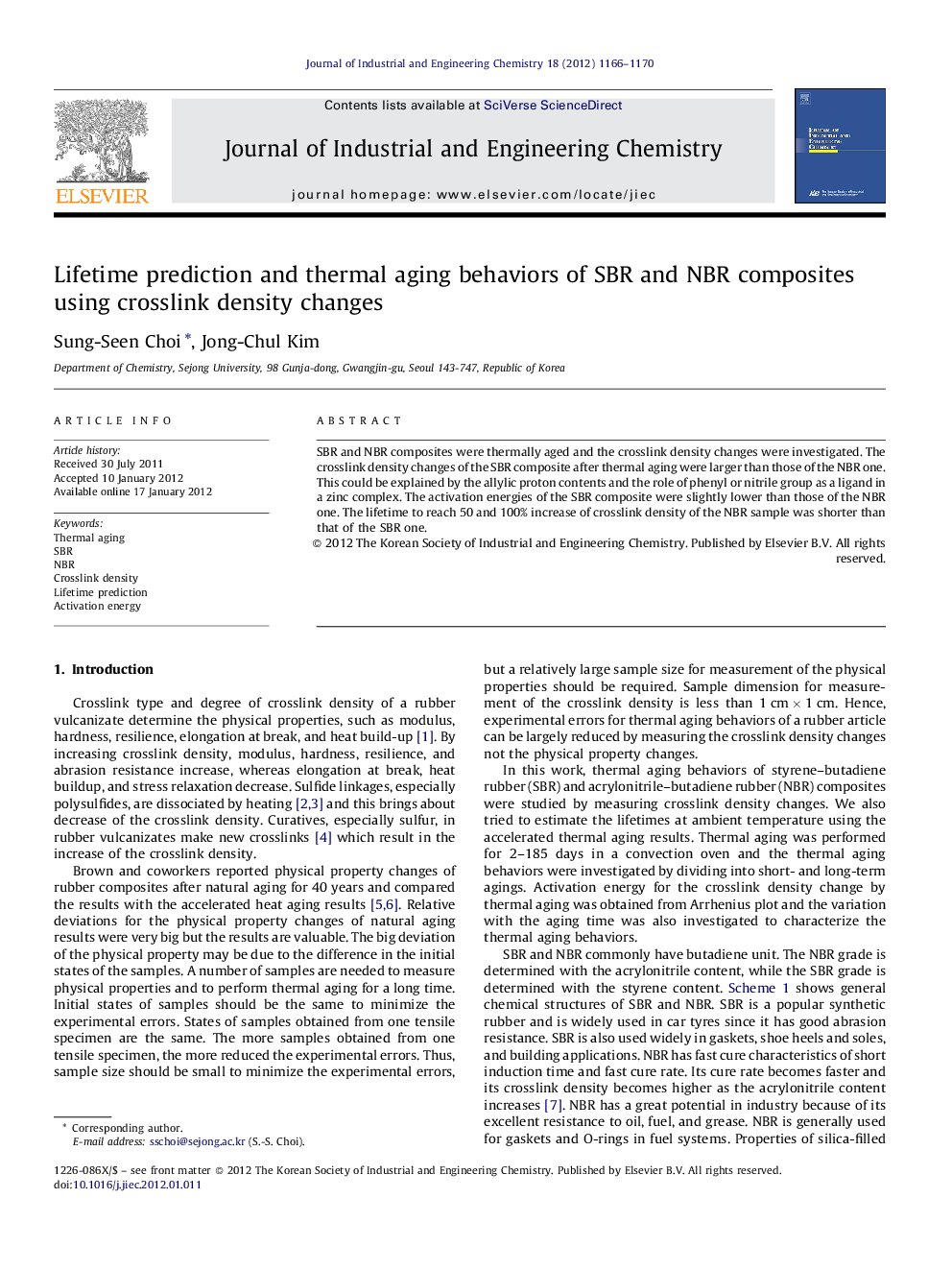| Article ID | Journal | Published Year | Pages | File Type |
|---|---|---|---|---|
| 228014 | Journal of Industrial and Engineering Chemistry | 2012 | 5 Pages |
Abstract
SBR and NBR composites were thermally aged and the crosslink density changes were investigated. The crosslink density changes of the SBR composite after thermal aging were larger than those of the NBR one. This could be explained by the allylic proton contents and the role of phenyl or nitrile group as a ligand in a zinc complex. The activation energies of the SBR composite were slightly lower than those of the NBR one. The lifetime to reach 50 and 100% increase of crosslink density of the NBR sample was shorter than that of the SBR one.
Related Topics
Physical Sciences and Engineering
Chemical Engineering
Chemical Engineering (General)
Authors
Sung-Seen Choi, Jong-Chul Kim,
